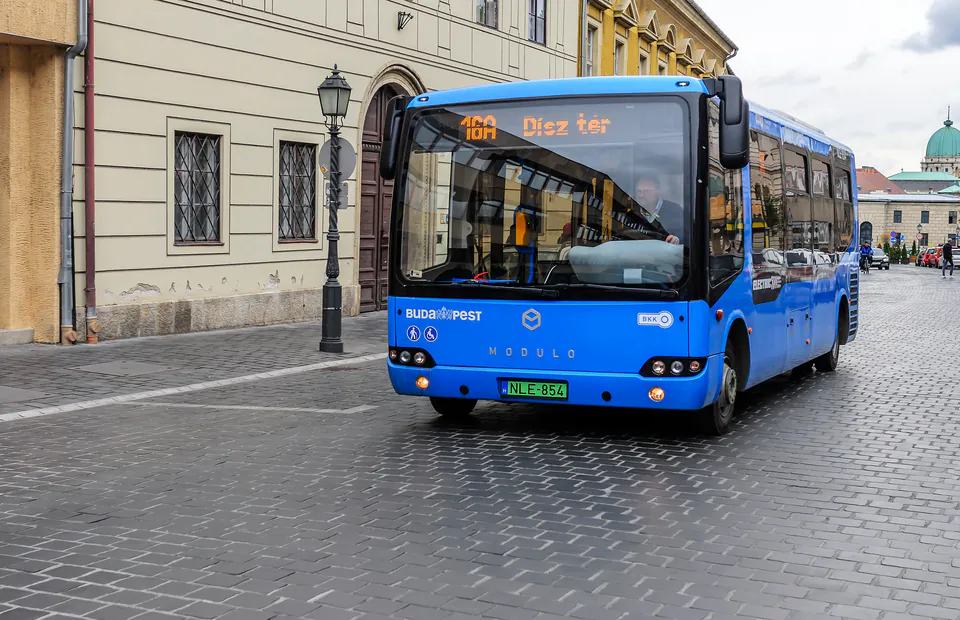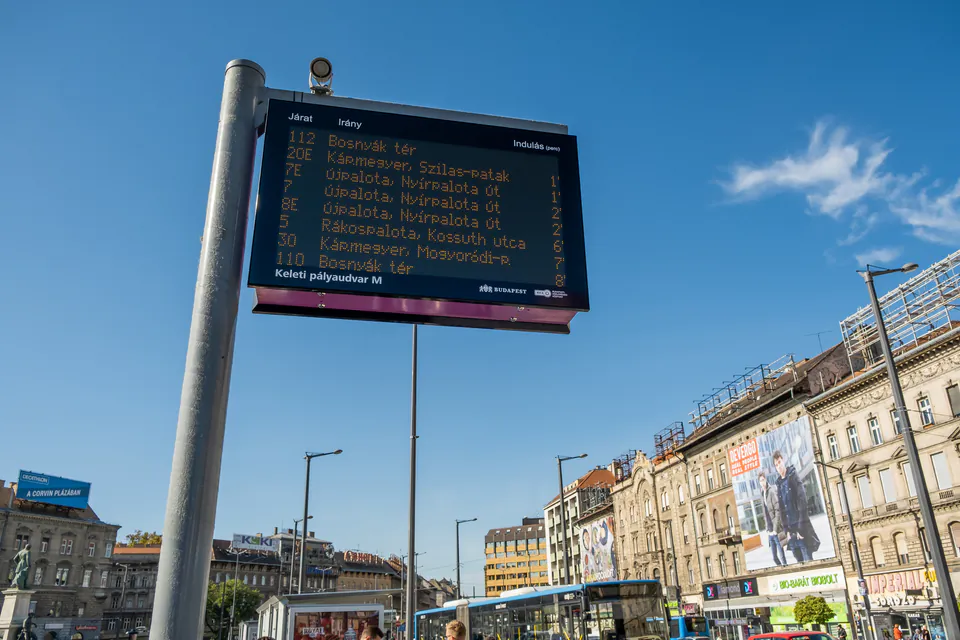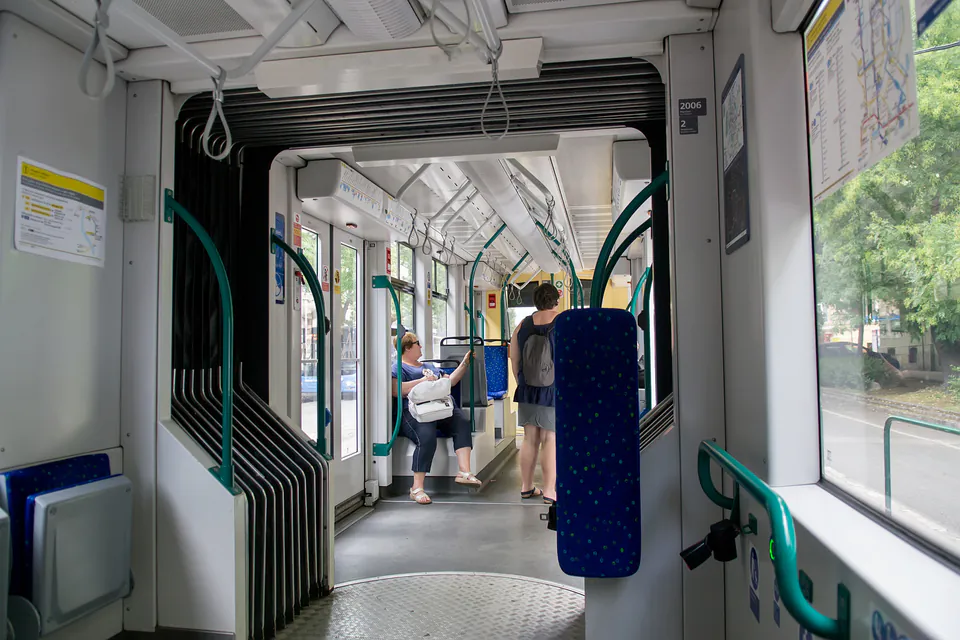Exploring Budapest by Bus: Routes, Tickets, and Accessibility Features
Those bright blue buses you see everywhere in Budapest? They're actually your ticket to seeing parts of the city that trains and trams just can't reach. With over 200 bus lines running through this place, we've found them to be one of the best ways to get around, especially when you want to explore beyond the obvious tourist spots.
We always tell people that mastering the bus system here is like getting a secret key to the city. These buses go everywhere - up those steep Buda hills to the castle, through local neighborhoods where real Budapest life happens, and even out to the airport. The best part? They're all part of the same BKK transport system, so your metro ticket works on buses too.
When we first visited Budapest years ago, we made the mistake of only using the metro and missing out on so much. The buses connect you to places like Buda Castle District and those amazing residential areas where you can actually see how locals live. Plus, they run late into the night when other transport stops.

How the Bus Network Works
Budapest's bus system is pretty smart once you figure out the basics. Those blue buses go where the metro and trams can't - and trust us, that's a lot of places. The numbering system makes sense too. Regular buses have normal numbers, express buses (the faster ones) have an "E" after the number, and short connector routes usually have an "A".
Most buses start running around 4:30 in the morning and keep going until about 11 pm. During busy times, you'll get a bus every 10 minutes or so. When it's quieter, maybe every 20 minutes. We've found them pretty reliable for getting to museums in the morning or thermal baths in the evening.
Here's what we love about Budapest's system - one ticket works for everything. Buses, metro, trams, even those trolleybuses. BKK runs the whole thing, so you don't have to deal with different tickets for different transport like in some cities.

Must-Know Tourist Bus Routes
Getting to Buda Castle
If you want to see Buda Castle without hiking up that hill, buses 16, 16A, and 116 are your best friends. We always recommend these to people because they're the easiest way to get up there and the views during the ride are amazing.
Bus 16 is probably the most useful one. It starts at Deák Ferenc tér (where all the metro lines meet) and goes right across Chain Bridge to the castle area. You'll stop at Clark Ádám tér if you want to take that funicular, Dísz tér for the main castle area, and Szentháromság tér near Matthias Church and Fisherman's Bastion.
The ride itself is half the fun. When we took it last spring, we got incredible views of the Parliament building as we crossed the Danube. The 16A is more direct if you're already on the Buda side, and route 116 gives you some extra options for where to start your trip.

Airport Connection
Bus 200E is a budget traveler's dream for getting between the airport and city center. We've used this route tons of times and it's honestly almost as fast as the expensive options. It connects both airport terminals with Kőbánya-Kispest metro station on the blue M3 line. From there, it's a quick metro ride to downtown.
The whole trip takes about 20-25 minutes to the metro station. What's great is that 200E runs every 10-15 minutes during busy times and keeps going pretty late. And here's the best part - it takes regular BKK tickets, so it's super cheap compared to taxis or airport shuttles.
Other Useful Bus Routes
Bus 7 is really handy if you're arriving by train at Keleti Railway Station. It goes all the way across the city to Móricz Zsigmond körtér in Buda, passing through central spots like Blaha Lujza tér, Astoria, and Ferenciek tere. We've found it useful when staying near these transport hubs.
Route 105 gives you a nice surface view of Andrássy Avenue. It starts at Heroes' Square and basically follows the M1 metro line before crossing to Buda via Chain Bridge. It's like getting a free tour of one of Budapest's fanciest streets.
Bus 178 connects Keleti Railway Station to Naphegy tér and goes through some areas tourists like while also hitting real residential neighborhoods where you can see actual local life.

Tickets and How Much Things Cost
Budapest makes ticketing pretty simple since the same tickets work for all public transport. Single tickets cost 450 HUF if you buy them ahead of time from machines, tobacco shops, or that BudapestGO app. But if you buy from the bus driver, they cost 600 HUF. We learned this the hard way on our first trip and ended up spending way more than we needed to.
If you're planning multiple trips, buying 10 tickets at once costs 4,000 HUF total, which saves you some money. For visitors, those time-based cards are usually better - 24-hour, 48-hour, and 72-hour passes give you unlimited travel on everything BKK runs. The Budapest Card goes even further and includes museum discounts and other tourist stuff.
You have to validate your ticket right when you get on the bus. Stick your paper ticket into those orange machines near the driver, number end first. The machine stamps it with date and time. If you're using the BudapestGO app, digital tickets activate automatically when you board, which is pretty convenient.
Bus Ticket Options and Prices
| Ticket Type | Price (HUF) | Validity | Best For |
|---|---|---|---|
| Single Ticket | 450 (600 from driver) | One journey | Occasional use |
| Block of 10 | 4,000 | 10 single journeys | Multiple trips |
| 24-hour Pass | 2,500 | 24 hours unlimited | Day visitors |
| 72-hour Pass | 5,000 | 72 hours unlimited | Weekend trips |
| Budapest Card | From 6,900 | 24-120 hours | Tourists with sightseeing |
Tips That Actually Help
Getting Around Like a Local
Budapest buses work on a request-stop system, which means you need to press that red "stop" button if you're the only one getting off. It says "Leszállásjelző" in Hungarian. Press it and a "stop requested" light comes on for the driver. This keeps buses on schedule by not stopping when nobody needs to get off.
Fair warning - bus drivers here drive pretty aggressively, especially on those narrow, winding Buda hill streets. We were definitely surprised our first time. Hold on tight and get ready for quick starts and sharp turns. It's just how things work here and honestly, it keeps the system running efficiently.
Plan your exit before you get to your stop. Budapest buses get really crowded during rush hour, and you'll need to work your way to the doors early. The back doors usually open automatically, but when it's busy, you might need to press the door button to get out.

What Locals Expect
Hungarian public transport culture is pretty quiet and respectful. Don't talk loudly on your phone or play music without headphones. Locals usually give up seats for elderly people, pregnant women, and people with small kids. Following this shows you get the culture and people appreciate it.
Keep your validated ticket where you can grab it quickly. Ticket inspectors check regularly and can give you big fines if your ticket isn't valid or you don't have one. We've noticed they often check tourist areas and sometimes focus on foreign visitors, so always have your ticket ready.
Night Buses Keep the City Moving
When regular transport stops around 11 pm, Budapest's night bus network takes over. These buses (numbered 901 to 999) run from about 11 pm until 5 am, so you can get home safely after exploring the city's famous ruin pubs or going to evening shows.
In central areas, night buses come pretty often - every 10-15 minutes on major routes. We've used them after late nights in the ruin pub district and they work great. The same tickets and passes you use during the day work on night buses too.
Night bus routes basically follow the same paths as the main daytime services, replacing metro lines and popular tram routes. Route maps at big stops show night connections clearly, and the BudapestGO app gives real-time info for night buses just like daytime ones.

Tourist Buses vs Regular Buses
Besides regular BKK buses, Budapest has those specialized sightseeing buses made just for tourists. These hop-on, hop-off services run separately from public transport but can be useful for getting oriented on your first day.
Big Bus Tours hits over 20 stops at major attractions like St. Stephen's Basilica, Parliament, and Heroes' Square. Their 24, 48, and 72-hour tickets start from €34.20 for adults and include recorded commentary in English plus a one-hour Danube River cruise. They run from 9 am to 5 pm with buses every hour Monday through Friday and more often on weekends.
City Sightseeing does something similar with 15+ stops at iconic places, following one route that covers landmarks like the National Opera, Chain Bridge, and Buda Castle. Their tickets also include a Danube boat ride and operate from 9 am to 6 pm daily.
These tourist buses cost way more than public transport, but they give you structured sightseeing with commentary and let you explore at your own pace.

Mixing Different Types of Transport
Budapest's bus network works best when you combine it with other transport. The integration is really smooth - you can start on metro, switch to a tram, and finish on a bus using just one ticket or pass. This flexibility is great when you're exploring different neighborhoods or trying to reach attractions in various parts of the city.
The system even includes boats on the Danube River. Route D12 gives you a scenic option, connecting Kopaszi Gát and Római Fürdő with stops at Buda Castle Bazaar and Margaret Island. These boats take the same BKK tickets and passes, which adds a cool dimension to getting around the city.
Major transport hubs like Deák Ferenc tér, Széll Kálmán tér, and Keleti Railway Station are where multiple bus routes meet up with metro and tram lines. Understanding these connection points helps you get around efficiently and cuts down your travel time.
Getting Around with Accessibility Needs
Budapest does a good job with accessible public transport. Over 90% of buses have low floors, wheelchair ramps at center or rear doors, designated spaces for wheelchairs and strollers, and clear accessibility markings. The BudapestGO app lets you filter for accessible routes, so travelers with mobility challenges can plan confidently.
Bus lines that go to major tourist attractions, including those essential Castle District routes 16, 16A, and 116, all use wheelchair-accessible vehicles. This accessibility also includes audio announcements for visually impaired passengers and priority seating areas that are clearly marked for people with special needs.
